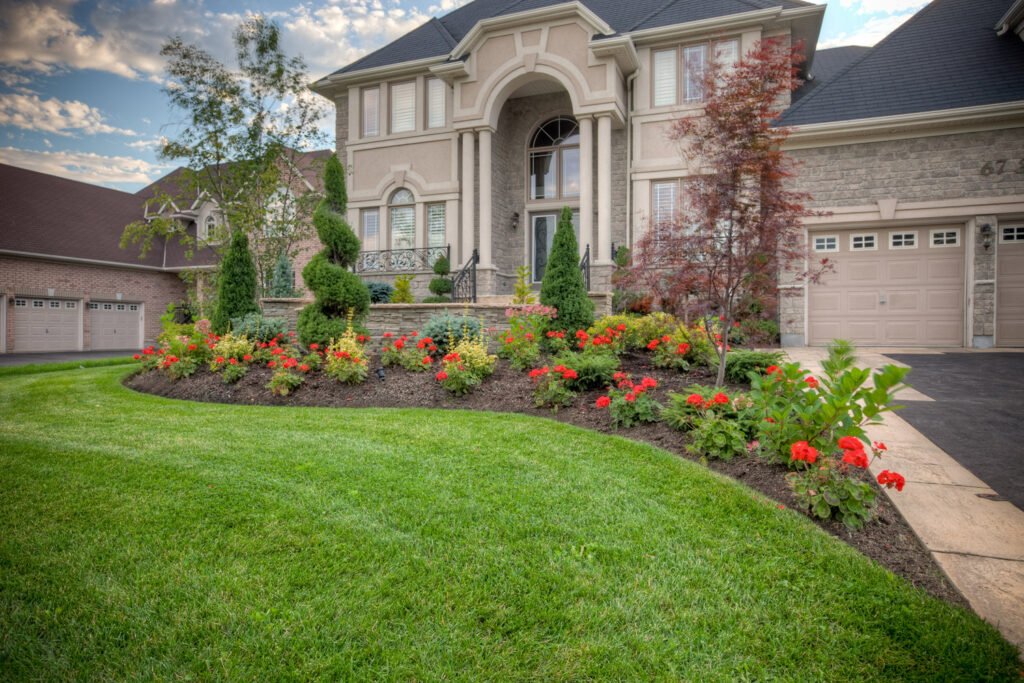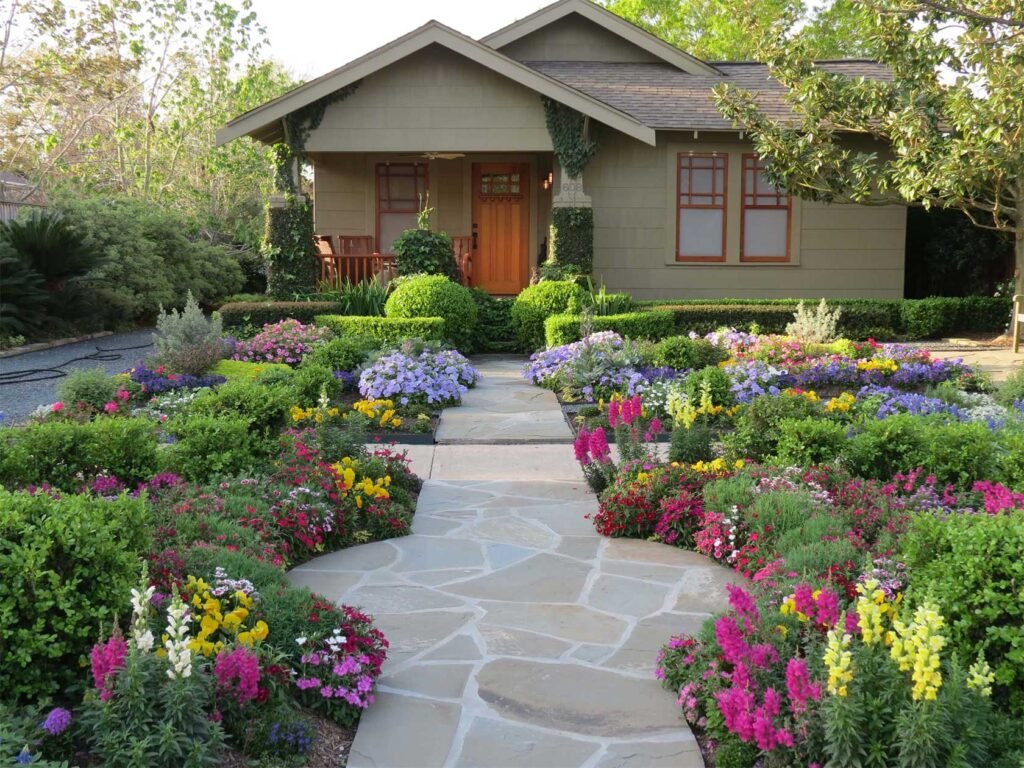Flower Beds in Front of House: Expert Tips for Curb Appeal and Maintenance
Flower beds in front of a house add beauty and curb appeal. They create a welcoming look and can highlight the home’s style. A well-planned flower bed combines color, texture, and shape to make the front of a house more attractive.

Choosing the right plants and placing them carefully is important for a lasting effect. Flower beds should match the house size and landscape, making sure they fit naturally with the surroundings. Simple touches like edging and mulch help keep the flower bed tidy and healthy.
Key Takeaways
- Proper plant choices enhance the house’s appearance.
- Design should fit the home’s size and style.
- Small details improve both look and maintenance.
Essential Elements for Flower Beds in Front of House

Creating an inviting flower bed starts with picking the right plants, preparing the soil carefully, and considering the local climate. Thoughtful design choices and low-maintenance plants can boost curb appeal without adding too much work.
Choosing the Right Plants
Select plants that suit the front yard’s climate and soil. Perennials like lavender, iris, salvia, and achillea offer color year after year. Include flowering shrubs such as hydrangea, azalea, and lilac for structure and seasonal interest.
Annuals add quick, bright color but need yearly replacement. Combining both types balances lasting beauty with seasonal variety. Use evergreens or ground cover plants like creeping thyme for constant foliage color and texture.
Vines can soften hard edges, climbing trellises or raised flower beds. For example, roses and potentilla provide both flowers and attractive foliage. Consider plant height and spacing to prevent overcrowding and allow healthy growth.
Soil Preparation and Climate Considerations
Healthy soil is vital for strong plants. Testing soil pH and texture helps choose the right amendments. Most garden plants prefer loamy, well-draining soil rich in organic matter.
Climate plays a large role, especially with temperature and rainfall. Plants like geum and salvia handle sun and heat well, while azalea and lilac prefer cooler, shaded spots. Group plants by their water needs to avoid over or under-watering.
Raised flower beds improve drainage, making them ideal for areas with heavy rain or compacted soil. Adding mulch helps retain moisture and keeps weeds down. Proper soil and climate planning leads to healthier plants and easier maintenance.
Design and Layout Strategies
Balance is key in flower bed design. Use taller plants like hydrangea or roses toward the back, smaller plants in front. Curved edges create a natural look compared to straight lines.
Mix colors and leaf textures to add visual interest. For example, pair bright achillea flowers with soft gray-green lavender foliage. Repeating certain plants ties the design together.
Consider the style of the house and yard. A cottage garden might include a mix of perennials, vines, and flowering shrubs for a casual, layered look. Keep walkways clear and allow enough space for plants to grow without crowding, which also makes garden care easier.
Low-Maintenance and Curb Appeal Tips
Choose plants known for low maintenance, such as creeping thyme or evergreens. These cut down the need for frequent watering and trimming. Mulching reduces weeds and keeps soil moist.
Avoid high-maintenance roses if constant pruning is unwanted. Instead, select hardy shrubs or perennials with long bloom times like salvia and potentilla. Use ground cover plants to reduce bare soil and prevent erosion.
Seasonal color boosts curb appeal. Mix perennials with annuals for long-lasting and changing blooms. Neat flower bed edges improve the overall look and keep the garden tidy. Simple, well-planned beds add beauty without demanding too much time or work.
Finishing Touches and Decorative Features

Well-chosen plants and accents can make a flower bed stand out. These final elements add height, texture, and visual interest. Functional and decorative items also enhance the space.
Incorporating Shrubs and Trees
Adding small trees or shrubs creates structure in a flower bed. A birch tree works well for spots needing shade and a tall, graceful shape. It offers white bark that contrasts with colorful flowers.
Dogwood is another excellent choice. It brings seasonal interest with spring blossoms and bright fall berries. Placing dogwood near a window or walkway draws attention to the bed.
Shrubs like boxwood or hydrangea fill gaps and provide greenery year-round. They help balance the floral colors and add depth. Proper spacing is key to avoid crowding the bed.
Adding Functional and Aesthetic Accents
Decorative features improve both looks and usability. A bird bath attracts wildlife and becomes a natural focal point. It suits beds near sitting areas for enjoyment.
Stone edging or low fences keep soil and mulch contained. They also define the flower bed’s shape clearly. Lighting fixtures bring safety while highlighting plants at night.
Benches or small garden statues add personality. These accents should fit the garden’s style and stay proportionate to the flower bed size. Too many items can clutter the space.
